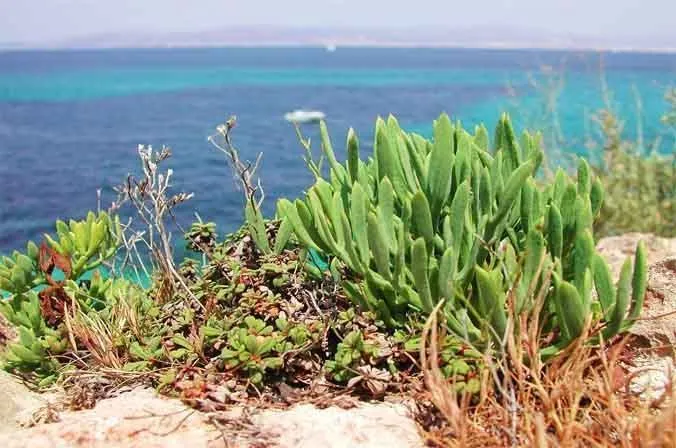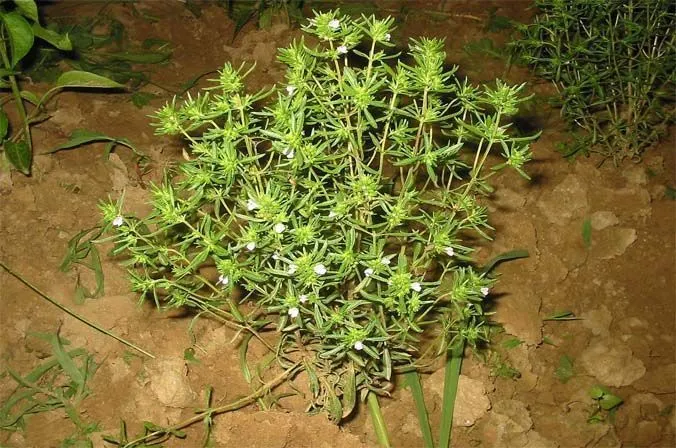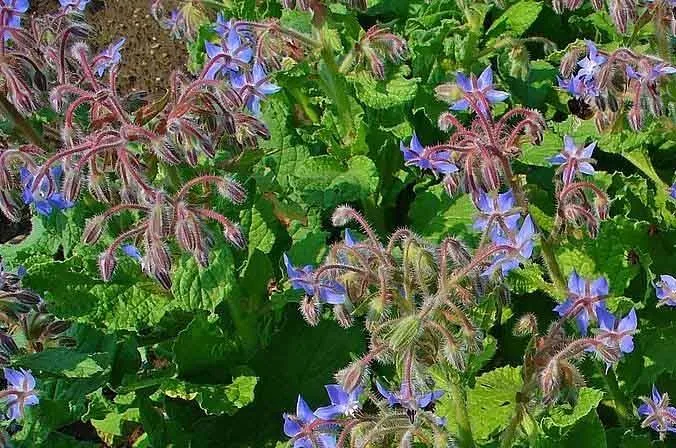There are many herbs and medicinal plants less known that have gone down in history. Either because they have stopped growing or because they are difficult to adapt and multiply in different climatic conditions, some of them may not even sound to the ears of the youngest. Others, however, still remain a workhorse, even if they have lost their position in history. Let’s see the medicinal and aromatic plants forgotten.
For example, this is the case of the betonic (Stachys officinalis)the Brabant myrtle or brabantic myrtle (Myrica gale) and many species of alhelí were previously used to flavor homemade beer. The ground ivy (Glechoma hederácea) it was used in tisanes, and with the cuajaleche or gallium (Galium verum) and with the dried linden flowers – still sold in some European markets – they became soporific.
The sea fennel (Crithmum maritimum) it has practically disappeared as a pickle herb, although it is still used in some regions of Britain. The Tansy or vermiguera grass (Chrysanthemum vulgare), much appreciated in medieval milk soups, it is today only a name in some desserts.
The verbena (Verbena officinalis), to which the ancient Persians ascribed magical powers (to find love), has lost its mystery. The wormwood (Artemis absinthium), related to tarragon and originally used as vermicide (which eliminates intestinal worms), is still cultivated commercially and is used in the preparation of vermouth and other snacks of this type. This last species is an example of grass grown today for decorative purposes, but there are many others that have disappeared from gardening, despite their culinary qualities and continuous use.

Table of Contents
Rare culinary herbs
The angelica (Angelica archangelica) is a huge plant, perennial and ephemeral, more than 2 m high that resists the coldest climatic zones. Green and non-woody stems are used, sugary, in biscuits and desserts. As for its cultivation, it needs moist soil and some shade, and it is better to grow it from seed.
The dried seeds of the anise (Pimpinella anisum) give their well-known aroma to alcoholic beverages. This annual plant, 50 cm high and similar to a small celery, must be sown in late spring, in a sunny place.
The lemon balm or lemon balm (Melissa officinalis) is an herb that is said to, added to a glass of wine, remove melancholy. It is perennial, resistant, up to 80 cm high and spreads quickly, like mint; its leaves, used for the same purposes as the latter, have an intense lemon smell.
The minor pimpinela (Sanguisorba minor) is now rarely used outside France and Italy. It is a perennial plant that resists the climate quite well, growing to about 60 cm tall. Its leaves, with a flavor similar to cucumber, are used or used in salads, for vinegars and sauces.
The Roman mint (chrysanthemum balsamite or Balsamite vulgare) or St. Mary’s wort, was so popular like the cantueso, to perfume linen cabinets and flavor beer. The leaves of this resistant species, up to 90 cm high, maintain their aroma when dry and are used to flavor soups, fillings, salads and wine glasses.
The dark purple berries of the juniper (Juniperus communis) have an intense pine smell and are used throughout Europe, especially in mountainous regions, to flavour fillings and pickles of meat, pâtés and cabbage dishes, as well as in gin.
The Levitic or mountain celery (Levisticum officinale) is one of the most useful but most forgotten herbs. The leaves, stems and seeds of this perennial, resistant, 60 cm high, are used in cooking.
The first, very aromatic, with a slight lemon smell, are used fresh in soups and salads, and dried in tisanes. The seeds are used like those of caraway and stems, like those of angelica.
In a normal garden, a single specimen is sufficient although new plants can be obtained from seeds planted in moist soil and in full sun.
The caterpillar (Eruca sativa) is an annual, salad plant, measuring up to 60 cm in height. It is rarely used outside southern Europe, although it grows in the wild in North America. It prefers rich and moist soils, where the acre leaves better preserve their crepe texture.
There are two varieties of savory, Satureja hortensis (white savory or white calamento) and S. montana (savory, swab or morquera). The first is an annual, hardy plant, 25 cm high. The second is a perennial, of similar height.

Both have sweet-smelling leaves, which give a slightly bitter taste to soups, fish dishes, eggs and vegetables. They dry very well, but those of the second species are of inferior flavor and somewhat more bitter than those of the first.
The round sorrel (Rumex scutatus and related species) was used by the Egyptians and Romans as a digestive after large meals. Today, this 30 cm tall resistant perennial is little used outside of FRrancia, although it was very popular in the Middle Ages. Its young, bitter leaves are added to the salads or used in soups. For its cultivation, a moist soil and a lot of sun are essential.
Herbs used for decoration
Some species, previously used in medicine and cooking, are cultivated today only as ornamental plants, in herb gardens or on curbs, having practically forgotten their ancient uses. Monarda didyma it’s a good example. It is a plant native to North America, where the Indians Oswego they used it to make a tea. It is an attractive specimen, about 60 cm high, with large bright red flowers that appear during the summer. Dried leaves are suitable for preparing tisanes.
The borage (Borago officinalis) has only one disadvantage, its tendency to propagate seeds throughout the garden, even in the thinnest crevices. It is resistant only in warm and temperate climates, in cretaceous soils and in the Sun. The flowers, resembling blue forget-me-nots, can be confitted. The leaves are covered with hairs and added to the wine, although the plant is grown mainly for its ornamental value.

The Roman chamomile (Anthemis nobilis) was a popular plant for grass in the time of the Tudors, because it gave off a pleasant aroma when stepping on the flowers and leaves. It is not resistant, but it is attractive in an herb garden. Its flowers, dried, are used in tisanes, bath tonics and hair dyes.
The hyssop (Hyssopus officinalis) is a perennial plant, up to 50 cm tall and hardy anywhere except in the extreme northern regions. It has been used more in medicine than in coinca, and with its aromatic mint-smelling leaves and ears of azualres flowers, it deserves to occupy a place in the garden.
The oolor acre of the blue-green hjojas, very divided, of the rue (Graveolens route) displeases many people. It reaches up to 60 cm in height, although it can be pruned annually, in spring, at ground level. Its small yellow flowers are unimportant, but the shape and color make it a very decorative plant. It is a classic ingredient of the grappa There was a time when it was considered an antidote to the bite of scorpions and snakes.
Among other suitable plants path to grow in a garden of medicinal and aromatic plants are: Myrrhis odorata, the meadowsweet (Filipendula ulmaria)the female abrótano (Santolina chamaecyparisus), Artemis abrotanum, the amaro or clary (Clary sage) and Helichrysum angustifolium, whose leaves have a typical smell.
You finally have the lavender (Lavandula spp), although it is not an authentic herb, it is grown gtracias to the intense aroma of its spikes flora, is that dry, inside dd bags, serve to perfume the cabinets and is usually used to form low hedges around the garden.
